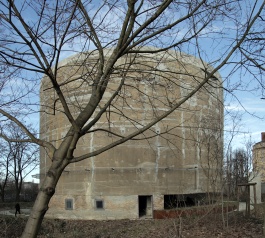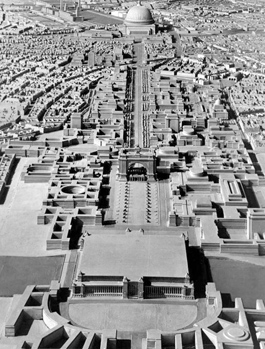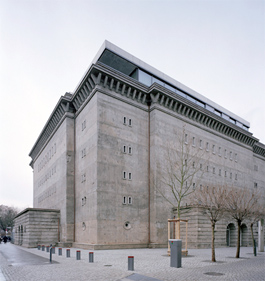
From Hitler's megalomaniacal Germany, only a "sponge" remains in Berlin
 |
The high-load-bearing structure, as this cylinder is officially called, was used to test the Berlin soil to see if it could support the planned 117-meter-tall and 170-meter-wide Victory Arch, which was to become one of the landmarks of the Nazi world metropolis. "The enormous mass of this Victory Arch made it unclear what its weight would do to the foundation," explained architect Michael Richter to ČTK.
Hitler's court architect Albert Speer therefore had a giant reinforced concrete block built in 1941 near today's Südkreuz station, weighing roughly the same as the proposed symbol of the Third Reich's victory, reaching 18 meters deep and with an above-ground portion towering to a height of 14 meters like a giant mushroom. Inside, various measuring devices were hidden to record the movements of this "mushroom".
"The architects of the time demanded that the Victory Arch should not sink more than six centimeters, but in the end, it sank 19.5 centimeters. This meant that without soil stabilization or better foundation choices, it could not be built," Richter commented on the experiment's results.
 |
The German dictator planned to completely rebuild most of Berlin, whose heart was to become a 5-kilometer-long exhibition boulevard bordered by lavish ministry buildings, opera houses, and theaters, with the Victory Arch rising at one end and the monstrous Great Hall with a giant dome reaching a height of 320 meters on the other, under which up to 180,000 people could fit.
But even before the preparations for Germania, as Speer later named the project, a number of buildings were realized in the German metropolis meant to reflect the grandeur of the new empire. Surviving the war was the Olympic Stadium built for the sports festival in 1936, which is home to the football team Hertha Berlin, or the then-largest building in the world, the terminal of the now-defunct Tempelhof airport.
The extensive complex of the federal Ministry of Finance also carries a "brown past", where the Ministry of Aviation under Hermann Göring used to be located, and later the constitution of the German Democratic Republic was declared here, or part of today's headquarters of German diplomacy, which was occupied by the Reich Bank and stored property stolen from Jews. During the times of the communist GDR, key political bodies of the Ulbricht and later Honecker regime convened there.
 |
After the war, the Soviets used the bunker for several years as a prison, and then it served as a warehouse. "Fruit, especially bananas from Cuba, were stored here, which is why the people of Berlin nicknamed it the banana bunker. It was used for this purpose almost until the fall of the Berlin Wall in 1989. Afterwards, its use completely changed. It became a techno club, a sex club, and all sorts of parties were held here," added the young Frenchman regarding the post-revolutionary use of the concrete colossus, which still bears the scars of war and traces of more modern devastation. For several years now, it has served as an unconventional gallery, where collector Christian Boros opens his collection of contemporary art to the public.
The English translation is powered by AI tool. Switch to Czech to view the original text source.
0 comments
add comment











